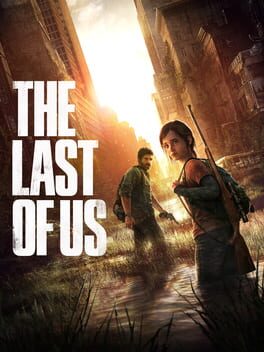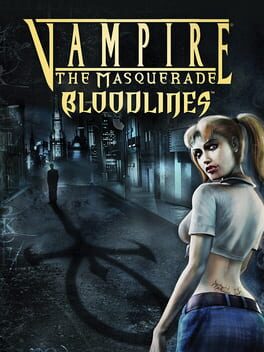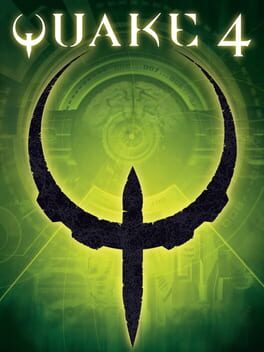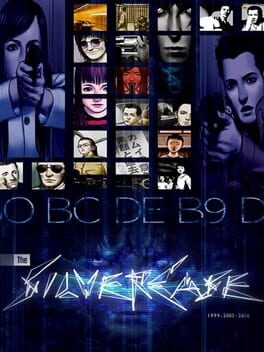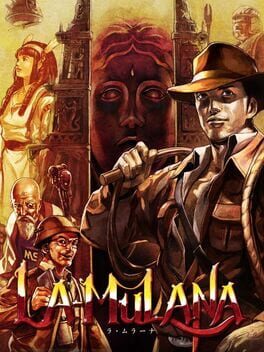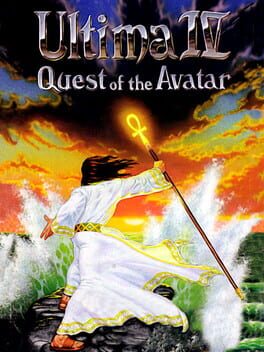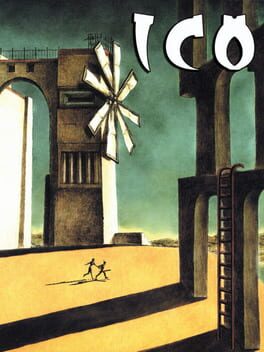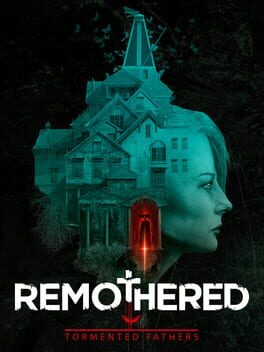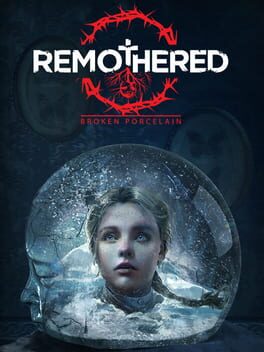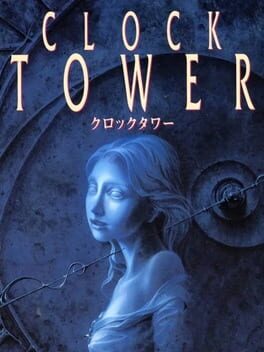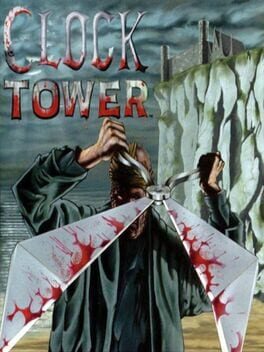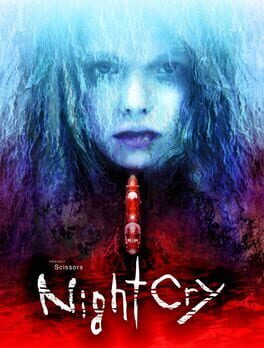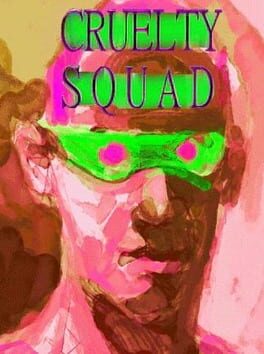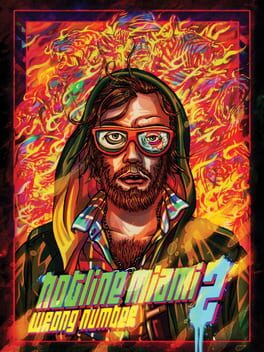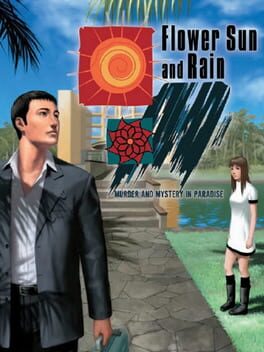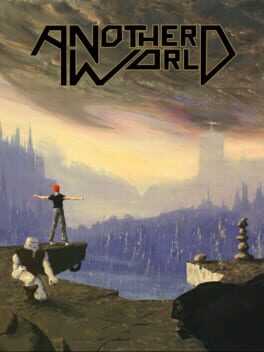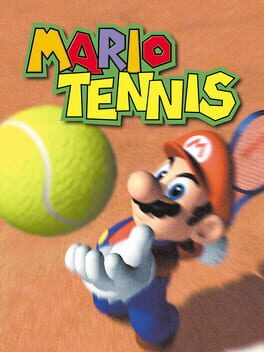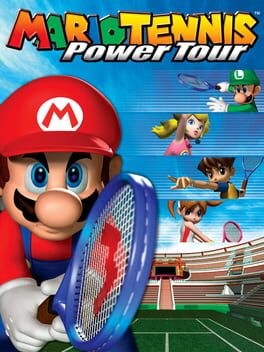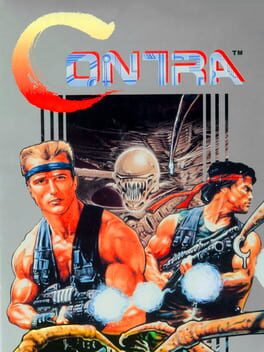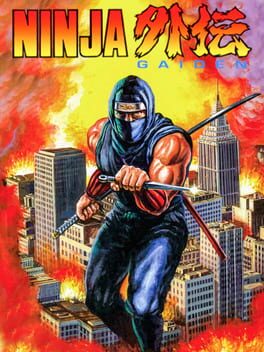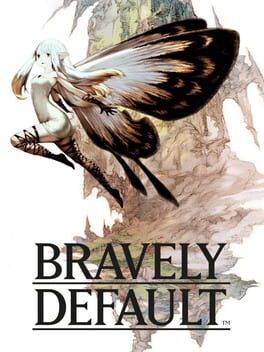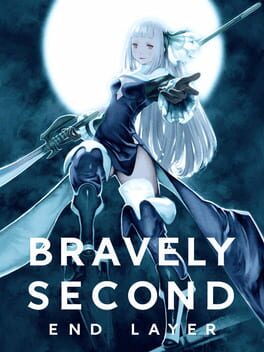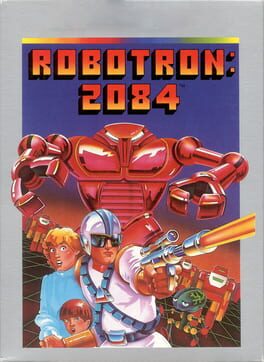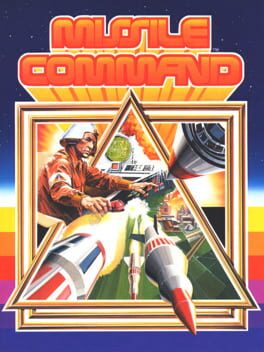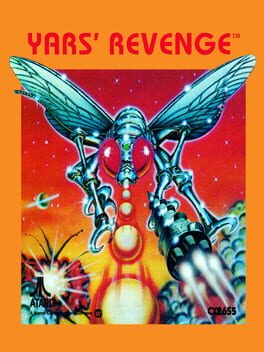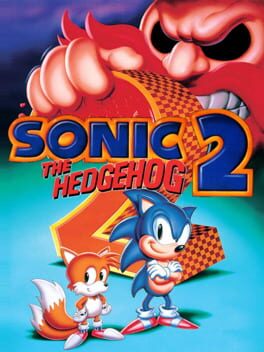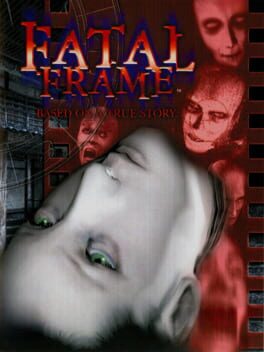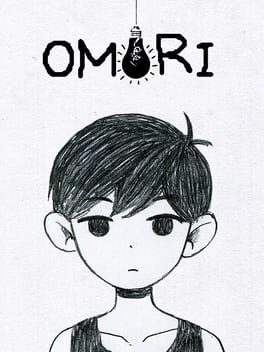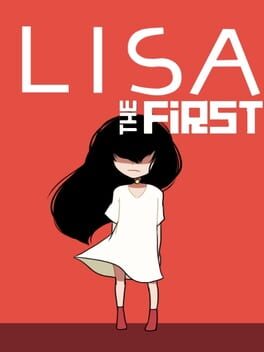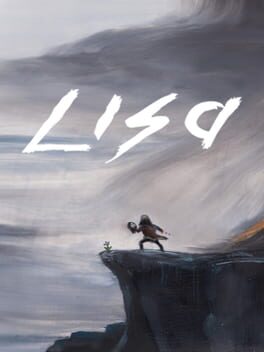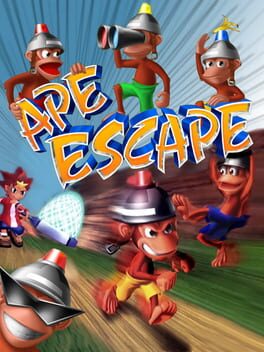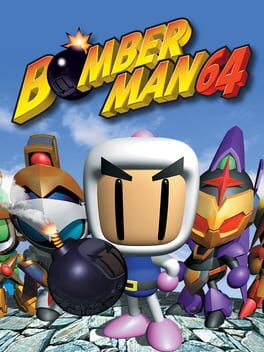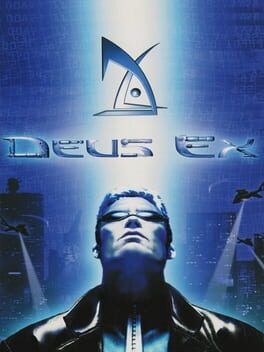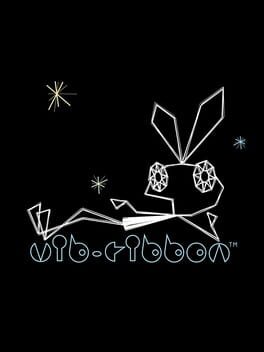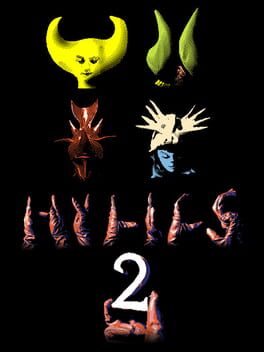Rogueliker
BACKER
318 reviews liked by Rogueliker
Gris
2018
I made a video on the game on YouTube (original language in Spanish, but I put subtitles): https://youtu.be/qcy-0bOY_No
Gris fails as an architectonic construct because as much as its imagery suggests beauty, the interaction with the world is empty. The details that are visually presented don't exist to the gameplay, creating a sensorial dissonance. Travelling through the landscape suggests going through stairs or small bumps of road, but the real input is pressing left and right, like if everything was flat. Gris fails as a platformer because there's no grace to the gravitational movement, no punishment for jumping wrong, no enrichment to use platforming for exploration. If you miss, you'll simply fall over and try again until you get it. Its only purpose is to trick the player that they're doing something while advancing and clearing puzzles and collectibles in order to justify that it's a game. It's so simple-minded that one wonders why it's there. It is inept as a statement about overcoming depression because of its vagueness: Instead of telling a personal viewpoint, the game uses its theme as an excuse for abstract imagery to elevate its tone to solemnity and sell itself as an artistic experience.
One just needs to compare it to other platformers that deal with the same topic to realize its lack of insight: Liz Ryerson's Problem Attic subverts rules constantly alongside a glitch aesthetic where bounds are unclear to exteriorize physical and mental prisons of people unhappy with their own identity (most specifically gender dysphoria). GAMBIT Game Lab's Elude uses its periodically weakening controls to materialize through physics the feeling of being pulled down by depression, when things that used to make you happy are no longer working, and the effort that's needed to get out of the mental abyss. Patchwork Doll's Rock Bottom sets itself into the bottom of a pit where you can't escape until you've experienced failure enough times by making death a puzzle as well as the source of an upgrade in the jump height, creating a sense of liberation after hardships. That no matter how many times you fail, there's always a way out. Even if the comparison was made with a game that I don't consider good, such as Maddy Thorson's Celeste, Gris pales is comparison as even if Celeste reveals a victimizing attitude, the game is more honest and has a purpose by using the metaphor of climbing a mountain and facing your internal demons in your path as a manifestation of overcoming mental problems. Gris's portrayal of overcoming depression is a soft experience that is distanced from the clinical condition, and is closer to romantization, without the pain behind. Setting aside how insulting it is to capitalize on sentimental appeal, the end result is that there's no statement, nothing that the game attempts, and thus, there's nothing accomplished. The game's seriousness only leads to a masquerade, as it's hollow inside.
Right now (December 2018), Gris has an 84 in Metacritic. This is art, gamers claim. No wonder why videogames are the laughing stock among other disciplines; why taking games as art is a meme. Veneer is what we ask from videogames after all, and I wonder if this is everything that there's to the future of this medium. Back in 1995, Shigeru Miyamoto reportedly said when talking about Donkey Kong Country that players will put up with mediocre gameplay as long as the "art" is good. More than twenty years later, Gris proves that such a statement still rings true.
(Edited the creator of Celeste's name on 29/09/2022)
Gris fails as an architectonic construct because as much as its imagery suggests beauty, the interaction with the world is empty. The details that are visually presented don't exist to the gameplay, creating a sensorial dissonance. Travelling through the landscape suggests going through stairs or small bumps of road, but the real input is pressing left and right, like if everything was flat. Gris fails as a platformer because there's no grace to the gravitational movement, no punishment for jumping wrong, no enrichment to use platforming for exploration. If you miss, you'll simply fall over and try again until you get it. Its only purpose is to trick the player that they're doing something while advancing and clearing puzzles and collectibles in order to justify that it's a game. It's so simple-minded that one wonders why it's there. It is inept as a statement about overcoming depression because of its vagueness: Instead of telling a personal viewpoint, the game uses its theme as an excuse for abstract imagery to elevate its tone to solemnity and sell itself as an artistic experience.
One just needs to compare it to other platformers that deal with the same topic to realize its lack of insight: Liz Ryerson's Problem Attic subverts rules constantly alongside a glitch aesthetic where bounds are unclear to exteriorize physical and mental prisons of people unhappy with their own identity (most specifically gender dysphoria). GAMBIT Game Lab's Elude uses its periodically weakening controls to materialize through physics the feeling of being pulled down by depression, when things that used to make you happy are no longer working, and the effort that's needed to get out of the mental abyss. Patchwork Doll's Rock Bottom sets itself into the bottom of a pit where you can't escape until you've experienced failure enough times by making death a puzzle as well as the source of an upgrade in the jump height, creating a sense of liberation after hardships. That no matter how many times you fail, there's always a way out. Even if the comparison was made with a game that I don't consider good, such as Maddy Thorson's Celeste, Gris pales is comparison as even if Celeste reveals a victimizing attitude, the game is more honest and has a purpose by using the metaphor of climbing a mountain and facing your internal demons in your path as a manifestation of overcoming mental problems. Gris's portrayal of overcoming depression is a soft experience that is distanced from the clinical condition, and is closer to romantization, without the pain behind. Setting aside how insulting it is to capitalize on sentimental appeal, the end result is that there's no statement, nothing that the game attempts, and thus, there's nothing accomplished. The game's seriousness only leads to a masquerade, as it's hollow inside.
Right now (December 2018), Gris has an 84 in Metacritic. This is art, gamers claim. No wonder why videogames are the laughing stock among other disciplines; why taking games as art is a meme. Veneer is what we ask from videogames after all, and I wonder if this is everything that there's to the future of this medium. Back in 1995, Shigeru Miyamoto reportedly said when talking about Donkey Kong Country that players will put up with mediocre gameplay as long as the "art" is good. More than twenty years later, Gris proves that such a statement still rings true.
(Edited the creator of Celeste's name on 29/09/2022)
Gris
2018
GRIS is certainly quite beautiful, but its insistence on prioritising aesthetics over substance by any means necessary - as well as a painfully banal artistic interpretation of mental illness - does very little to hide what a profoundly shallow experience it is.
4 / 10
.
.
.
.
This is one of those times where I find myself at pretty firm odds with the majority consensus. I certainly can’t deny that the art style in this game is amazing. The world feels very vibrant, the music is beautiful and serene. The animations are clean and elegant.
So why do I feel so indifferent about it?
Why did this leave me with such an empty feeling upon completion? Why can I barely remember anything from this game, even though it’s been only like 3 weeks or so at the point of me writing this review? Are good graphics and music really all it takes to convince people they’re playing a good video game?
Maybe it’s because I’m just thoroughly disenchanted with these type of “nothing” games, where the actual gameplay takes an indefinite backseat in favour of presentation and ””storytelling””. You know, Limbo, Inside, Little Nightmares, more recently Stray, etc. There are exceptions, like Abzu which utilises a satisfying movement scheme and presents itself as an interactive ocean life documentary. Even Inside and Limbo at least have a semi-interesting story to uncover. I guess, what I’m asking is: What sets GRIS apart? What’s the draw here?
The art direction is almost certainly the main draw for a lot of people, and while I personally think it should never outweigh the actual gameplay, I can’t fault the game for looking as beautiful as it does. The aquarelle aesthetic and usage of colour feel very deliberate and unique to this game. The animations, be it the player character’s movement or the world at large, are close to flawless and communicate their purpose to the player incredibly well. The music is beautiful, with moods ranging from uplifting to deeply melancholic. In general, this game looks and sounds fantastic, and is unquestionably one of the best in the medium in that regard. Again, this isn’t too unusual for this genre of game where “story and art are more important than gameplay”.
My question will always remain the same when it comes to this topic though:
Why is this even a game? Why is this not just a movie? What unique experience does this piece of electronic entertainment offer within the confines of the interactive medium which I couldn’t simply get from a film or video instead?
I’m asking this because, when it comes to actual gameplay, there really isn’t all that much here. The game initially presents itself as something like Metroidvania-style puzzle platformer, which at first made me think that maybe the game would come up with interesting abilities based on colour theory or something like that. Instead, GRIS gives you a whopping 3 unique abilities: Becoming heavy, a double jump and singing. This wouldn’t be so bad if it ever did anything interesting with it, but the devs’ absolute refusal to put anything even remotely resembling a challenging gameplay section into their game seriously takes its toll by the end, when it becomes painfully clear that none of this will go anywhere, and the unbearably boring slog that 90% of the game boil down to is all in service to the story.
That itself would have been fine if they story was actually any interesting, which I am sad to say it really isn’t. I’ve been told that this game was one of the best games to tackle depression and mental illness beforehand, so I went into this game with that in mind. All I can say is that: If THIS pop-psychology laden surface level interpretation of mental illness is supposed to be one of the better ones in the interactive medium, we have a long way to go.
GRIS manages an interesting, albeit unintentional, balancing act by both painting depression literally manifesting itself as a dark, black bird clouding the sky, taking away all the colour in life, while also leaving the rest so abstract and bereft of any actual substance that it may as well be anything you want it to be. It feels like what the collective conscious of circa 2015-era Tumblr would come up with when prompted to conceptualise a manifestation of mental illness. It’s so trite and obnoxious in its non-descriptiveness that it sometimes feels like it’s taking the piss out of itself. It tries so hard to be deep and profound but doesn’t really end up saying anything at all. I’d say the best attempts at trying to represent abstract concepts in art - especially when it comes to mental illness - work something like an interactive poem, where all the individual pieces can be constructed into different meanings. GRIS just announces that it’s about depression without really exploring the subject beyond the most bare of surfaces.
You want a game with a great art style that addresses concepts like depression and loss of self in a way that is both textually AND meta-textually interesting AND comes with amazing gameplay? Try Dark Souls. Perhaps you want something more light hearted and with a more creative spin on the subject? Psychonauts 1 and 2 are both readily available. How about something more abstract? Majora’s Mask has been out for 20 years at this point. Hellblade: Senua’s Sacrifice, Disco Elysium, Silent Hill, The Beginner’s Guide, Celeste, etc.. all of these games not only address mental illness and overcoming adversity within yourself in a much more tangible and meaningful way than GRIS, they also don’t skimp out on gameplay to achieve their vision.
Ultimately all of this is to say that, despite its stellar art direction and animation, GRIS is unbearably BORING. There is no reason to ever replay this, unless you want to watch this ca. 4 hour interactive movie again.
Even if you’re a big fan of this genre of game, there are better examples than this. I am convinced that, if this game didn’t look and sound as good as it does, people wouldn’t even give it a second glance.
4 / 10
4 / 10
.
.
.
.
This is one of those times where I find myself at pretty firm odds with the majority consensus. I certainly can’t deny that the art style in this game is amazing. The world feels very vibrant, the music is beautiful and serene. The animations are clean and elegant.
So why do I feel so indifferent about it?
Why did this leave me with such an empty feeling upon completion? Why can I barely remember anything from this game, even though it’s been only like 3 weeks or so at the point of me writing this review? Are good graphics and music really all it takes to convince people they’re playing a good video game?
Maybe it’s because I’m just thoroughly disenchanted with these type of “nothing” games, where the actual gameplay takes an indefinite backseat in favour of presentation and ””storytelling””. You know, Limbo, Inside, Little Nightmares, more recently Stray, etc. There are exceptions, like Abzu which utilises a satisfying movement scheme and presents itself as an interactive ocean life documentary. Even Inside and Limbo at least have a semi-interesting story to uncover. I guess, what I’m asking is: What sets GRIS apart? What’s the draw here?
The art direction is almost certainly the main draw for a lot of people, and while I personally think it should never outweigh the actual gameplay, I can’t fault the game for looking as beautiful as it does. The aquarelle aesthetic and usage of colour feel very deliberate and unique to this game. The animations, be it the player character’s movement or the world at large, are close to flawless and communicate their purpose to the player incredibly well. The music is beautiful, with moods ranging from uplifting to deeply melancholic. In general, this game looks and sounds fantastic, and is unquestionably one of the best in the medium in that regard. Again, this isn’t too unusual for this genre of game where “story and art are more important than gameplay”.
My question will always remain the same when it comes to this topic though:
Why is this even a game? Why is this not just a movie? What unique experience does this piece of electronic entertainment offer within the confines of the interactive medium which I couldn’t simply get from a film or video instead?
I’m asking this because, when it comes to actual gameplay, there really isn’t all that much here. The game initially presents itself as something like Metroidvania-style puzzle platformer, which at first made me think that maybe the game would come up with interesting abilities based on colour theory or something like that. Instead, GRIS gives you a whopping 3 unique abilities: Becoming heavy, a double jump and singing. This wouldn’t be so bad if it ever did anything interesting with it, but the devs’ absolute refusal to put anything even remotely resembling a challenging gameplay section into their game seriously takes its toll by the end, when it becomes painfully clear that none of this will go anywhere, and the unbearably boring slog that 90% of the game boil down to is all in service to the story.
That itself would have been fine if they story was actually any interesting, which I am sad to say it really isn’t. I’ve been told that this game was one of the best games to tackle depression and mental illness beforehand, so I went into this game with that in mind. All I can say is that: If THIS pop-psychology laden surface level interpretation of mental illness is supposed to be one of the better ones in the interactive medium, we have a long way to go.
GRIS manages an interesting, albeit unintentional, balancing act by both painting depression literally manifesting itself as a dark, black bird clouding the sky, taking away all the colour in life, while also leaving the rest so abstract and bereft of any actual substance that it may as well be anything you want it to be. It feels like what the collective conscious of circa 2015-era Tumblr would come up with when prompted to conceptualise a manifestation of mental illness. It’s so trite and obnoxious in its non-descriptiveness that it sometimes feels like it’s taking the piss out of itself. It tries so hard to be deep and profound but doesn’t really end up saying anything at all. I’d say the best attempts at trying to represent abstract concepts in art - especially when it comes to mental illness - work something like an interactive poem, where all the individual pieces can be constructed into different meanings. GRIS just announces that it’s about depression without really exploring the subject beyond the most bare of surfaces.
You want a game with a great art style that addresses concepts like depression and loss of self in a way that is both textually AND meta-textually interesting AND comes with amazing gameplay? Try Dark Souls. Perhaps you want something more light hearted and with a more creative spin on the subject? Psychonauts 1 and 2 are both readily available. How about something more abstract? Majora’s Mask has been out for 20 years at this point. Hellblade: Senua’s Sacrifice, Disco Elysium, Silent Hill, The Beginner’s Guide, Celeste, etc.. all of these games not only address mental illness and overcoming adversity within yourself in a much more tangible and meaningful way than GRIS, they also don’t skimp out on gameplay to achieve their vision.
Ultimately all of this is to say that, despite its stellar art direction and animation, GRIS is unbearably BORING. There is no reason to ever replay this, unless you want to watch this ca. 4 hour interactive movie again.
Even if you’re a big fan of this genre of game, there are better examples than this. I am convinced that, if this game didn’t look and sound as good as it does, people wouldn’t even give it a second glance.
4 / 10
Metroid
1986
"Bro this game is so outdated!!! Just play Zero Mission instead and skip this!!!!!!!!!!"
why don't I skip over your bad takes how about that
shoutout to HPRshredder and his guide for getting me interested in playing Metroid 1 again as well as The Geek Critique for revisiting the game and shedding a more positive light to it. I haven't seen U Can Beat Video Games's video yet but his Castlevania II and Dragon Warrior ones were really great so this one's probably worth checking too, okay I'll actually talk about the game now
there's something about the original Metroid that has this cool...."uniqueness"? yeah I'm not sure what's the right word for it, but there's a unique feeling about this one that none of the later games quite have. now I agree that every other Metroid game I played is better than this one (every 2D one besides Metroid II GB, a decent portion of Prime 1), but I'd say that this is comparing a collection of gold trophies to a singular dusty gold trophy that could use a quick feather duster to shine again. what I'm saying is that this game's good
what's cool about the original Metroid's story is that there's nothing to precede it. none of the familiar lore of the later games is here so what we're given is in this one (which isn't much) (that's cool though) is all we really get. basically a powerful species known as "Metroids" has been captured by the Space Pirates, they're like criminals but in the space alien variety. The Federation Police sends out some bounty hunters to Planet Zebes, which is the Space Pirates hideout, to stop them from using the Metroids as a dangerous weapon however none of them were able to succeed. as a last resort they send Samus Aran, a cool cyborg dude (please don't get on my case I'll bring it up later) who gained a famous reputation for completely bounties most others thought would be impossible. naturally it would make sense for them to send the best of the best, so now Samus Aran must now traverse through Planet Zebes, explore and find the items and abilities left by it's previous civilization, defeat the two leaders of the Pirates (Ridley and Kraid), and eradicate the Metroids before they destroy the galaxy! for the first game, there's still a pretty decent amount of backstory and is still much more than a majority of games that came before it, so it's cool that there's a reason why you're there as well as an actual world you're in that isn't just a bunch of nameless disconnected levels, that's pretty nice for a game made in 1986.
Metroid is an exploration game, everyone probably knows it. what everyone always knows as well is that you're aren't just going right the entire game (cue a lengthy explanation on how a first-time player goes right until a dead end, only to go all the way back to the left and find the Morph Ball so they can go through the tiny corridor they couldn't before). your ultimate goal of the game is to defeat both Ridley and Kraid so you can access the final part of the game you encounter the Metroids as well as the final boss, however the way you go about doing so is all up to you, to the point where you can choose whether to face Ridley first or Kraid first. now you could immediately head straight for their hideouts and take them out as soon as possible, but an inexperienced player will no doubt get their ass handed to them, which makes sense since Zebes is a pretty hostile planet, so they'll probably want to stay around in Brinstar (the beginning section of Zebes) for a while and gather items to power up and prepare them for the tougher parts of the game. some of the items you can get are Missiles, which not only are a powerful offense, but can also help you open the Ketchup and Mustard Doors that can't be opened by regular shots. Energy Tanks not only increase your health by 100 but it also fully restores your health too, there's 8 of them in the game but Samus's health is maxed out after 6 of them, so it'd be a good idea to save the remaining 2 for when you need to regain some health quickly. now for actual upgrades, the Morph Ball (or Maru Mari as the cool people call it) lets Samus morph into a tiny ball to get through small passages, and the Bomb allows Samus to make bombs in this form to help defeat small enemies and get through blocks that otherwise can't be destroyed. the Long Beam makes Samus's shots long ranged which can be good for dealing enemies from far away, but it's not too important of an upgrade so you can to skip it if you want. the Ice Beam lets you freeze almost all the enemies in the game which also can turn them into temporary platforms before they thaw out which can helpful if you don't want to deal with them or if you want to do a few helpful skips, it can still be used as a regular weapon. the Wave Beam is a beam that pierces through everything and is decently powerful, however it overrides the Ice Beam which is needed if you want to defeat or get away from the Metroids in the final area so it's actually even more skippable than the Long Beam, if you plan to use this then make sure you pick up the Ice Beam again before you head to the final area. the High Jump Boots let Samus just higher, not much to say other then it helps Samus obtain the Varia Suit easier. the Varia Suit not only changes Samus's armor to a bright pink as a symbol of power, but it also halves all damage taken, making it very useful when it comes to traversing beyond Brinstar. lastly the Screw Attack, probably the best upgrade here, lets you perform a powerful shock whenever you diagonally jump, which instantly kills most regular enemies in the game, not only that but it's possible to get the item before you even face Ridley or Kraid, I cannot justify its power with what I'm saying here so you really need to get it yourself so you can understand what I mean.
once you're powered up and have defeated the two Space Pirate leaders, you can head to the upper left corner of Brinstar and gain access to the final area, Tourian, where the Metroids and final obstacle of the game is awaiting you, "Mother Brain". you better conserve your missiles for the end, and I don't mean just for Mother Brain, but to even get to her you'll have to destroy regenerating barriers that can only be damaged by barriers, they don't regenerate if you can manage to destroy them thankfully. the Mother Brain fight is weird, she doesn't attack you at all but the Rinkas (floating projectives that aim for you) and the cannons in the battlefield are very plentiful, so you'll be spending your time getting hit by those a lot thanks to your big hitbox, and whatever you do, DON'T fall in the lava in front of Metroid Brain, try to keep your distance by being on the right edge of the final pillar so you don't fall in the lava and instead land on the safe platform to the right of the pillar. after defeating Mother Brain you've now completed the ga-- SIKES YOU HAVE TO DO A SURPRISE ESCAPE SEQUENCE but it's kinda easy outside of the platforms being a bit small, the layout is also repeated a lot so it really shouldn't be a big deal once you memorized it. when you do that only then do you get the ending and here's when the fun part comes in. depending on how fast you beat the game, you might be able to discover Samus's true identity! if you manage to finish the game under five hours, Samus takes off the helmet to reveal....HE WAS A SHE THE WHOLE TIME?!?!?!?!?! yeah everyone and their mother knows Samus is a female nowadays (unless you don't so if this is how you find out then I'm terribly sorry), Nintendo themselves only kept it a secret for this game in particular, but for 1986 this was a pretty cool hidden twist, especially considering that Samus is one of the first female protagonists. yeah Ms. Pac-Man predates her by about four years, sorry Samus! if you finish the game in under three hours Samus goes down to a leotard which also lets you play as in that form after the credits (or by a password if you don't want to do all that), and under a hour has her go into a bikini. she must be the most cocky and confident bounty hunter ever if she's taking down an entire planet wearing nothing but that under her suit. if you didn't beat the game under five hours, you can always try again and see how faster you can become with more experience and knowledge of Planet Zebes. it's a pretty short game so that along with the incentive of getting to see Samus in a 8-bit bikini makes the replayability of the original Metroid pretty high.
Metroid's graphics are very simplistic, but I think this actually benefits toward the game's favor. normally having a black background for the entire game would be kinda lame, but for here it works. you're venturing inside a dark and hostile planet, if the background was blue or something then the entire atmosphere would be thrown out of the window. speaking of atmosphere, I think this is the first game in my opinion to successfully pull off a tense one. the realistic looking enemies compared to other games at the time having stuff like Goombas or Moblins makes you feel like your dealing with a much more genuine threat, though a lot of them are actually easy to face against especially once you have enough upgrades. all the dark scenery likes the faces you see next to the elevator that takes you to Ridley as well as the iconic face in the corridor just before Kraid's room makes you feel like you really don't belong here, thankfully you're playing as Samus though and no one is more capable for this job than her.
if you need something to boost the atmosphere, then the soundtrack's got you covered. the Title Theme starts off simplistic and foreboding but if you stick around long enough then it transforms to a much more hopeful melody but looping back to the menacing drones again. the Start Jingle and Brinstar continue this optimism with an upbeat and heroic tune before you end up wandering into a Secret Area that brings back the droning from the beginning of the title screen but with a more neutral and mysterious tone this time. if you're lucky and happen to come across the statues that grant you upgrades you get this Item Jingle to signal that not only did you gain a new ability but that you're on the right path to victory. though if you hear this near an elevator and choose to go down, you'll instead hear this foreboding tune of Norfair which while also signifies you're on the right part (to Ridley in particular), it also means the game's no longer messing around and you face a huge threat of getting killed if you haven't prepped up enough before. go down even further to Ridley's Hideout and get to even to hear this game's "you will die" theme. if you choose to go to Kraid's Hideout, you instead get this really rad and groovy ass theme that I can't believe was composed back in 1986. it's insane how bopping Kraid's theme is, it almost feels out of place in a way but I'm not complaining, this is the best track in the game and I will not be argued otherwise. once you face Ridley and Kraid or just venture into Tourian, you get this pretty threatening theme once you ignore the goofy bubble sounds that play during the whole thing. by the time you get to Mother Brain there are no more melodies, there are only deranged 8-bit noises to describe the terror that is Mother Brain, and by Mother Brain, I mean everything else that's inside her room. the Escape Theme starts off with a "you need to get out" vibe but after the first 30 or so seconds it insteads transforms into a "you saved the galaxy, just one more push!" vibe. then there's the Ending Theme which is a full on melody that goes from menacing to triumphant then just starts going all out after that first minute, okay this might rival Kraid's theme for the best track in the game.
so yeah Metroid NES is epic especially for its time and I feel the smaller majority that still thinks this game holds up, though it is rough in a couple of places I'll admit. lack of a map, similar looking rooms, enemies being able to hit you while you're going through doors, starting with 30 energy after a game over, the entirety of Mother Brain's room, it's a little rough to get into, especially on your first or second playthrough when you have no idea what to do. if you have the courage to come back to this game though and learn everything about it, it becomes much more enjoyable and dare I say....fun. even with Zero Mission being arguably a better Metroid 1 experience, I still can't bring myself to say this game can be easily skipped. Zero Mission may take place in Zebes, but otherwise it's a full-on remake with completely different room layouts as well as reworked bosses and gameplay elements, a very great remake I have to add, but I do have the courage to tell you that you will indeed be missing out if you don't give the original a deserved shot. despite all my praises, this is somehow still the weakest Metroid I've played but a 7/10 being the weakest goes to show the exceptional quality of the Metroid franchise, heck I might change my score to a 8/10 later down the line because that's how neat I think Metroid is.
so yeah that's it, play the game, git gud or something do people still use that phrase
why don't I skip over your bad takes how about that
shoutout to HPRshredder and his guide for getting me interested in playing Metroid 1 again as well as The Geek Critique for revisiting the game and shedding a more positive light to it. I haven't seen U Can Beat Video Games's video yet but his Castlevania II and Dragon Warrior ones were really great so this one's probably worth checking too, okay I'll actually talk about the game now
there's something about the original Metroid that has this cool...."uniqueness"? yeah I'm not sure what's the right word for it, but there's a unique feeling about this one that none of the later games quite have. now I agree that every other Metroid game I played is better than this one (every 2D one besides Metroid II GB, a decent portion of Prime 1), but I'd say that this is comparing a collection of gold trophies to a singular dusty gold trophy that could use a quick feather duster to shine again. what I'm saying is that this game's good
what's cool about the original Metroid's story is that there's nothing to precede it. none of the familiar lore of the later games is here so what we're given is in this one (which isn't much) (that's cool though) is all we really get. basically a powerful species known as "Metroids" has been captured by the Space Pirates, they're like criminals but in the space alien variety. The Federation Police sends out some bounty hunters to Planet Zebes, which is the Space Pirates hideout, to stop them from using the Metroids as a dangerous weapon however none of them were able to succeed. as a last resort they send Samus Aran, a cool cyborg dude (please don't get on my case I'll bring it up later) who gained a famous reputation for completely bounties most others thought would be impossible. naturally it would make sense for them to send the best of the best, so now Samus Aran must now traverse through Planet Zebes, explore and find the items and abilities left by it's previous civilization, defeat the two leaders of the Pirates (Ridley and Kraid), and eradicate the Metroids before they destroy the galaxy! for the first game, there's still a pretty decent amount of backstory and is still much more than a majority of games that came before it, so it's cool that there's a reason why you're there as well as an actual world you're in that isn't just a bunch of nameless disconnected levels, that's pretty nice for a game made in 1986.
Metroid is an exploration game, everyone probably knows it. what everyone always knows as well is that you're aren't just going right the entire game (cue a lengthy explanation on how a first-time player goes right until a dead end, only to go all the way back to the left and find the Morph Ball so they can go through the tiny corridor they couldn't before). your ultimate goal of the game is to defeat both Ridley and Kraid so you can access the final part of the game you encounter the Metroids as well as the final boss, however the way you go about doing so is all up to you, to the point where you can choose whether to face Ridley first or Kraid first. now you could immediately head straight for their hideouts and take them out as soon as possible, but an inexperienced player will no doubt get their ass handed to them, which makes sense since Zebes is a pretty hostile planet, so they'll probably want to stay around in Brinstar (the beginning section of Zebes) for a while and gather items to power up and prepare them for the tougher parts of the game. some of the items you can get are Missiles, which not only are a powerful offense, but can also help you open the Ketchup and Mustard Doors that can't be opened by regular shots. Energy Tanks not only increase your health by 100 but it also fully restores your health too, there's 8 of them in the game but Samus's health is maxed out after 6 of them, so it'd be a good idea to save the remaining 2 for when you need to regain some health quickly. now for actual upgrades, the Morph Ball (or Maru Mari as the cool people call it) lets Samus morph into a tiny ball to get through small passages, and the Bomb allows Samus to make bombs in this form to help defeat small enemies and get through blocks that otherwise can't be destroyed. the Long Beam makes Samus's shots long ranged which can be good for dealing enemies from far away, but it's not too important of an upgrade so you can to skip it if you want. the Ice Beam lets you freeze almost all the enemies in the game which also can turn them into temporary platforms before they thaw out which can helpful if you don't want to deal with them or if you want to do a few helpful skips, it can still be used as a regular weapon. the Wave Beam is a beam that pierces through everything and is decently powerful, however it overrides the Ice Beam which is needed if you want to defeat or get away from the Metroids in the final area so it's actually even more skippable than the Long Beam, if you plan to use this then make sure you pick up the Ice Beam again before you head to the final area. the High Jump Boots let Samus just higher, not much to say other then it helps Samus obtain the Varia Suit easier. the Varia Suit not only changes Samus's armor to a bright pink as a symbol of power, but it also halves all damage taken, making it very useful when it comes to traversing beyond Brinstar. lastly the Screw Attack, probably the best upgrade here, lets you perform a powerful shock whenever you diagonally jump, which instantly kills most regular enemies in the game, not only that but it's possible to get the item before you even face Ridley or Kraid, I cannot justify its power with what I'm saying here so you really need to get it yourself so you can understand what I mean.
once you're powered up and have defeated the two Space Pirate leaders, you can head to the upper left corner of Brinstar and gain access to the final area, Tourian, where the Metroids and final obstacle of the game is awaiting you, "Mother Brain". you better conserve your missiles for the end, and I don't mean just for Mother Brain, but to even get to her you'll have to destroy regenerating barriers that can only be damaged by barriers, they don't regenerate if you can manage to destroy them thankfully. the Mother Brain fight is weird, she doesn't attack you at all but the Rinkas (floating projectives that aim for you) and the cannons in the battlefield are very plentiful, so you'll be spending your time getting hit by those a lot thanks to your big hitbox, and whatever you do, DON'T fall in the lava in front of Metroid Brain, try to keep your distance by being on the right edge of the final pillar so you don't fall in the lava and instead land on the safe platform to the right of the pillar. after defeating Mother Brain you've now completed the ga-- SIKES YOU HAVE TO DO A SURPRISE ESCAPE SEQUENCE but it's kinda easy outside of the platforms being a bit small, the layout is also repeated a lot so it really shouldn't be a big deal once you memorized it. when you do that only then do you get the ending and here's when the fun part comes in. depending on how fast you beat the game, you might be able to discover Samus's true identity! if you manage to finish the game under five hours, Samus takes off the helmet to reveal....HE WAS A SHE THE WHOLE TIME?!?!?!?!?! yeah everyone and their mother knows Samus is a female nowadays (unless you don't so if this is how you find out then I'm terribly sorry), Nintendo themselves only kept it a secret for this game in particular, but for 1986 this was a pretty cool hidden twist, especially considering that Samus is one of the first female protagonists. yeah Ms. Pac-Man predates her by about four years, sorry Samus! if you finish the game in under three hours Samus goes down to a leotard which also lets you play as in that form after the credits (or by a password if you don't want to do all that), and under a hour has her go into a bikini. she must be the most cocky and confident bounty hunter ever if she's taking down an entire planet wearing nothing but that under her suit. if you didn't beat the game under five hours, you can always try again and see how faster you can become with more experience and knowledge of Planet Zebes. it's a pretty short game so that along with the incentive of getting to see Samus in a 8-bit bikini makes the replayability of the original Metroid pretty high.
Metroid's graphics are very simplistic, but I think this actually benefits toward the game's favor. normally having a black background for the entire game would be kinda lame, but for here it works. you're venturing inside a dark and hostile planet, if the background was blue or something then the entire atmosphere would be thrown out of the window. speaking of atmosphere, I think this is the first game in my opinion to successfully pull off a tense one. the realistic looking enemies compared to other games at the time having stuff like Goombas or Moblins makes you feel like your dealing with a much more genuine threat, though a lot of them are actually easy to face against especially once you have enough upgrades. all the dark scenery likes the faces you see next to the elevator that takes you to Ridley as well as the iconic face in the corridor just before Kraid's room makes you feel like you really don't belong here, thankfully you're playing as Samus though and no one is more capable for this job than her.
if you need something to boost the atmosphere, then the soundtrack's got you covered. the Title Theme starts off simplistic and foreboding but if you stick around long enough then it transforms to a much more hopeful melody but looping back to the menacing drones again. the Start Jingle and Brinstar continue this optimism with an upbeat and heroic tune before you end up wandering into a Secret Area that brings back the droning from the beginning of the title screen but with a more neutral and mysterious tone this time. if you're lucky and happen to come across the statues that grant you upgrades you get this Item Jingle to signal that not only did you gain a new ability but that you're on the right path to victory. though if you hear this near an elevator and choose to go down, you'll instead hear this foreboding tune of Norfair which while also signifies you're on the right part (to Ridley in particular), it also means the game's no longer messing around and you face a huge threat of getting killed if you haven't prepped up enough before. go down even further to Ridley's Hideout and get to even to hear this game's "you will die" theme. if you choose to go to Kraid's Hideout, you instead get this really rad and groovy ass theme that I can't believe was composed back in 1986. it's insane how bopping Kraid's theme is, it almost feels out of place in a way but I'm not complaining, this is the best track in the game and I will not be argued otherwise. once you face Ridley and Kraid or just venture into Tourian, you get this pretty threatening theme once you ignore the goofy bubble sounds that play during the whole thing. by the time you get to Mother Brain there are no more melodies, there are only deranged 8-bit noises to describe the terror that is Mother Brain, and by Mother Brain, I mean everything else that's inside her room. the Escape Theme starts off with a "you need to get out" vibe but after the first 30 or so seconds it insteads transforms into a "you saved the galaxy, just one more push!" vibe. then there's the Ending Theme which is a full on melody that goes from menacing to triumphant then just starts going all out after that first minute, okay this might rival Kraid's theme for the best track in the game.
so yeah Metroid NES is epic especially for its time and I feel the smaller majority that still thinks this game holds up, though it is rough in a couple of places I'll admit. lack of a map, similar looking rooms, enemies being able to hit you while you're going through doors, starting with 30 energy after a game over, the entirety of Mother Brain's room, it's a little rough to get into, especially on your first or second playthrough when you have no idea what to do. if you have the courage to come back to this game though and learn everything about it, it becomes much more enjoyable and dare I say....fun. even with Zero Mission being arguably a better Metroid 1 experience, I still can't bring myself to say this game can be easily skipped. Zero Mission may take place in Zebes, but otherwise it's a full-on remake with completely different room layouts as well as reworked bosses and gameplay elements, a very great remake I have to add, but I do have the courage to tell you that you will indeed be missing out if you don't give the original a deserved shot. despite all my praises, this is somehow still the weakest Metroid I've played but a 7/10 being the weakest goes to show the exceptional quality of the Metroid franchise, heck I might change my score to a 8/10 later down the line because that's how neat I think Metroid is.
so yeah that's it, play the game, git gud or something do people still use that phrase
The Last of Us
2013
A linguagem cinematográfica em suas múltiplas expressões é resultado de um processos históricos e criativos que durante as primeiras décadas do cinema apresentaram as possibilidades e consolidaram essa mídia como uma linguagem própria, tomando a distância necessária de formas de expressão das quais o próprio cinema emprestou elementos, como a música, o teatro e a literatura. Para que o cinema pudesse de fato nascer foi necessário que houvesse um esforço em descolar-se de suas influências e apegar-se a sua própria tradição, tornando-se, portanto, a mídia mais autorreferencial já vista até então. O bom cinema celebra a si mesmo.
Os videogames, por outro lado, em específico o senso comum em torno da mídia interativa, celebra empréstimos, ou mesmo assimilações de artes alheias à tradição dos games, em específico o cinema. Deve-se, antes de tudo, reconhecer a relação histórica e a importância da influência da linguagem cinematográfica sobre a construção da cultura dos videogames, dado pontos de intersecção técnicos compartilhados pelas duas mídias. No entanto, cabe estabelecer que uma arte só existe quando ela realiza-se em si mesma, sem depender de empréstimos, isto é, a evolução da linguagem dos videogames depende que os games sejam cada vez mais games e celebrem a sua condição como jogo, diferente da ideia atacanha de compreender a presença de elementos cinematográficos em um jogo como sinônimo de qualidade dentro do espectro. Pelo contrário, nesses casos o que prevalece é a covardia de admitir-se como jogo e seguir a fundo um projeto de criação dentro das infinitas possibilidades da linguagem.
Sob essa lógica, The Last of Us apresenta-se como um jogo essencialmente de enredo, focado nas relações entre os personagens, valendo-se principalmente de cutscenes que pontuam os principais momentos da trama e dão sentido ao jogo, entre uma cena e outra existem sequências de exploração que consistem em segurar o direcional para frente e arenas de combate que permitem o uso de um combate quebrado e disfuncional oferecido pelos desenvolvedores, ao passo que, em termos de narrativa, principalmente nos momentos de cutscenes, após a segunda metade o jogo opera com qualidade. Trata-se de uma boa história, de bons personagens, cenários interessantes de serem observados, que no entanto não compõem um bom jogo, o corpo narrativo não integra-se junto às mecânicas, a relação se dá em dissonância, percebe-se um jogo disjuntado, cujas partes não possuem coesão. A muleta oferecida pelas sequências cinematográficas não mais é capaz de dar conta da complexidade que os videogames da ultima década demandam.
Cabe ao vídeo game negar qualquer coisa que não seja a si próprio, pretensões que visam alternativas alheias às qualidades da mídia retardam sua evolução, leia-se, perceber empréstimos cinematográficos como benéficos ou mesmo pontos altos num produto da mídia, nada menos é que desprezar a própria mídia e impregnar uma visão míope sobre suas possibilidades. Deve-se libertar o videogame e amar o videogame, pois este ainda não foi inventado.
Os videogames, por outro lado, em específico o senso comum em torno da mídia interativa, celebra empréstimos, ou mesmo assimilações de artes alheias à tradição dos games, em específico o cinema. Deve-se, antes de tudo, reconhecer a relação histórica e a importância da influência da linguagem cinematográfica sobre a construção da cultura dos videogames, dado pontos de intersecção técnicos compartilhados pelas duas mídias. No entanto, cabe estabelecer que uma arte só existe quando ela realiza-se em si mesma, sem depender de empréstimos, isto é, a evolução da linguagem dos videogames depende que os games sejam cada vez mais games e celebrem a sua condição como jogo, diferente da ideia atacanha de compreender a presença de elementos cinematográficos em um jogo como sinônimo de qualidade dentro do espectro. Pelo contrário, nesses casos o que prevalece é a covardia de admitir-se como jogo e seguir a fundo um projeto de criação dentro das infinitas possibilidades da linguagem.
Sob essa lógica, The Last of Us apresenta-se como um jogo essencialmente de enredo, focado nas relações entre os personagens, valendo-se principalmente de cutscenes que pontuam os principais momentos da trama e dão sentido ao jogo, entre uma cena e outra existem sequências de exploração que consistem em segurar o direcional para frente e arenas de combate que permitem o uso de um combate quebrado e disfuncional oferecido pelos desenvolvedores, ao passo que, em termos de narrativa, principalmente nos momentos de cutscenes, após a segunda metade o jogo opera com qualidade. Trata-se de uma boa história, de bons personagens, cenários interessantes de serem observados, que no entanto não compõem um bom jogo, o corpo narrativo não integra-se junto às mecânicas, a relação se dá em dissonância, percebe-se um jogo disjuntado, cujas partes não possuem coesão. A muleta oferecida pelas sequências cinematográficas não mais é capaz de dar conta da complexidade que os videogames da ultima década demandam.
Cabe ao vídeo game negar qualquer coisa que não seja a si próprio, pretensões que visam alternativas alheias às qualidades da mídia retardam sua evolução, leia-se, perceber empréstimos cinematográficos como benéficos ou mesmo pontos altos num produto da mídia, nada menos é que desprezar a própria mídia e impregnar uma visão míope sobre suas possibilidades. Deve-se libertar o videogame e amar o videogame, pois este ainda não foi inventado.
As rickety and often barely functional yet ultimately powerful as its titular protagonists. Less than an hour into this replay, I got stuck inside a door and had to reload a save to get out, had a guard I’d intimidated into passivity turn hostile again when he rounded a corner and witnessed an unconscious, bedridden patient aggressively A-pose when I fed on his doctor, but as ever, I stick with it regardless because virtually everything else about the game is so enthralling. The ladies call it “oh God!,” but you can call it Vampire the Masquerade – Bloodlines.
Paradoxically, VTMB’s main strength is probably its immersion. No amount of glitchiness could be enough to prevent anyone from feeling smothered in the atmosphere of dark urban decay it depicts, even after several playthroughs; this was my fourth since I was little and I still find myself wary of areas which I should know by now have no enemies or other dangers, because (appropriately, considering the game’s premise) there’s always a pervasive sense that there could be. Something less obvious that contributes to this is the fact that it’s one of few RPGs with a contemporary setting – it’s easier to feel on edge when familiar locales like a beachside hotel, a hospital or an arcade are supernaturally twisted into something uncomfortable. These aspects join hands with a soundtrack which sounds like what you’d see if you peered into the mind of any of this portrayal of LA’s aimless drifters, grungy ambient sound effects, imposing neo-Gothic architecture and some lovely, imagination-sparking skyboxes to make each of its four small but dense hub worlds that much more of a joy to explore, even when the later portions take their infamous downturn in terms of options for resolving quests and general rushed-ness.
It's a pity that the endgame’s so combat-orientated given that the combat system, despite being somewhat flexible and satisfying in small doses thanks to some of the more out-there vampiric powers, generally isn’t engaging enough to maintain long-term interest. One area in which VTMB never falters, though, is in terms of character interactions. Stellar voice acting and facial animations unique in their sheer expressiveness, true even of NPCs which most players might never even encounter, don’t just bring its cast to (un)life but also make the dialogue system feel more natural, too. As in the first two Fallout games with which Troika shared several staff, NPCs’ demeanour towards you is telegraphed diegetically via their facial expressions and, although speech checks are highlighted by a bunch of fancy fonts, there’s no indication of whether you’ll succeed at them or whether doing so’ll even result in a beneficial outcome. Only on my third playthrough did I learn that you can lock yourself out of getting the Downtown haven if you’re too cheeky to LaCroix, with no warnings next to any of the dialogue options that result in this. It’s all too rare and all too cool that an RPG pulls the rug out from under you like this and lets you get whisked away on a domino effect of your poor decisions, however minor they seem at the time.
What accentuates this even further is the diversity between the clans you can pick at the start. Playing a Malkavian or Nosferatu in particular’s so differentiated from those with their heads and/or skin screwed on that it’s almost like playing the game for the first time again; as above, it wasn’t until this replay that I learned you could skip the tutorial and miss out on a free lockpick until I realised the hard way that I don’t have as good a grasp on the voices in my Malk’s head as I’d thought. It occasionally feels like every character needing to be voiced restricted the lengths Troika could go to in integrating unique interactions for these oddball clans, but the fact that there’s one entirely optional clan which alters every single line of player dialogue in the game and at least one other which fundamentally changes how you have to navigate the hubs is really impressive, no less for the restraint this must’ve taken than for its impact on gameplay and replay value – again, reminiscent of low-INT builds in Fallout 1 and 2.
You’ll probably have noticed that this review’s got a consistent thread running through it of getting slapped in the face with things I didn’t know were in the game before, and that’s because a core draw of VTMB is discovery. It’s why I’ve not dug into how juicy much of its dialogue is, the surprising amount of other World of Darkness tabletops it draws from beyond just Vampire or the frequency with which it reminds you what a vivid imagination its character designers/artists have, because it all deserves to learnt firsthand. That said, I did make a tiny collage to drive home the latter point: these four characters all live on roughly the same street. The amount of effort it must’ve taken to conceptualise a cast so varied’s almost as mad to think about as the fact that VTMB is old enough now to arguably function as period piece.
This being as true of the time in which it released as of its contents is what led to this revisit in the first place. Having played and enjoyed Cyberpunk 2077 and Starfield in quick succession, both of which feature only about as many bugs across an entire playthrough as any individual hour of this (if even), I find it hard to imagine a world where the public wouldn’t sentence VTMB to the same death-by-hyperbole if it were to come out now, without the reputational fortune of being long solidified as a cult classic for epic gamers only. It turns out that releasing in the same week as Half Life 2, MGS3 and Halo 2 was a blessing in disguise, if only because this was well before the Camarilla saw fit to punish us with social media monetisation and how it's helped foster vague, directionless outrage about games most of those perpetuating it have no intention of playing anyway as its own micro-industry.
Forever glad that people were able to see the forest for the trees in this particular case, for whatever reason, and recognise that not even bugs on the level of crashing the game when you press the screenshot button or a penultimate boss in three out of four story routes constituting what may genuinely be the worst boss fight in any video game are enough to sink the one-of-a-kind RPG that VTMB is. Take the plunge into its supernatural underworld, look forward to making mistakes along the way and remember: don’t open it.
Paradoxically, VTMB’s main strength is probably its immersion. No amount of glitchiness could be enough to prevent anyone from feeling smothered in the atmosphere of dark urban decay it depicts, even after several playthroughs; this was my fourth since I was little and I still find myself wary of areas which I should know by now have no enemies or other dangers, because (appropriately, considering the game’s premise) there’s always a pervasive sense that there could be. Something less obvious that contributes to this is the fact that it’s one of few RPGs with a contemporary setting – it’s easier to feel on edge when familiar locales like a beachside hotel, a hospital or an arcade are supernaturally twisted into something uncomfortable. These aspects join hands with a soundtrack which sounds like what you’d see if you peered into the mind of any of this portrayal of LA’s aimless drifters, grungy ambient sound effects, imposing neo-Gothic architecture and some lovely, imagination-sparking skyboxes to make each of its four small but dense hub worlds that much more of a joy to explore, even when the later portions take their infamous downturn in terms of options for resolving quests and general rushed-ness.
It's a pity that the endgame’s so combat-orientated given that the combat system, despite being somewhat flexible and satisfying in small doses thanks to some of the more out-there vampiric powers, generally isn’t engaging enough to maintain long-term interest. One area in which VTMB never falters, though, is in terms of character interactions. Stellar voice acting and facial animations unique in their sheer expressiveness, true even of NPCs which most players might never even encounter, don’t just bring its cast to (un)life but also make the dialogue system feel more natural, too. As in the first two Fallout games with which Troika shared several staff, NPCs’ demeanour towards you is telegraphed diegetically via their facial expressions and, although speech checks are highlighted by a bunch of fancy fonts, there’s no indication of whether you’ll succeed at them or whether doing so’ll even result in a beneficial outcome. Only on my third playthrough did I learn that you can lock yourself out of getting the Downtown haven if you’re too cheeky to LaCroix, with no warnings next to any of the dialogue options that result in this. It’s all too rare and all too cool that an RPG pulls the rug out from under you like this and lets you get whisked away on a domino effect of your poor decisions, however minor they seem at the time.
What accentuates this even further is the diversity between the clans you can pick at the start. Playing a Malkavian or Nosferatu in particular’s so differentiated from those with their heads and/or skin screwed on that it’s almost like playing the game for the first time again; as above, it wasn’t until this replay that I learned you could skip the tutorial and miss out on a free lockpick until I realised the hard way that I don’t have as good a grasp on the voices in my Malk’s head as I’d thought. It occasionally feels like every character needing to be voiced restricted the lengths Troika could go to in integrating unique interactions for these oddball clans, but the fact that there’s one entirely optional clan which alters every single line of player dialogue in the game and at least one other which fundamentally changes how you have to navigate the hubs is really impressive, no less for the restraint this must’ve taken than for its impact on gameplay and replay value – again, reminiscent of low-INT builds in Fallout 1 and 2.
You’ll probably have noticed that this review’s got a consistent thread running through it of getting slapped in the face with things I didn’t know were in the game before, and that’s because a core draw of VTMB is discovery. It’s why I’ve not dug into how juicy much of its dialogue is, the surprising amount of other World of Darkness tabletops it draws from beyond just Vampire or the frequency with which it reminds you what a vivid imagination its character designers/artists have, because it all deserves to learnt firsthand. That said, I did make a tiny collage to drive home the latter point: these four characters all live on roughly the same street. The amount of effort it must’ve taken to conceptualise a cast so varied’s almost as mad to think about as the fact that VTMB is old enough now to arguably function as period piece.
This being as true of the time in which it released as of its contents is what led to this revisit in the first place. Having played and enjoyed Cyberpunk 2077 and Starfield in quick succession, both of which feature only about as many bugs across an entire playthrough as any individual hour of this (if even), I find it hard to imagine a world where the public wouldn’t sentence VTMB to the same death-by-hyperbole if it were to come out now, without the reputational fortune of being long solidified as a cult classic for epic gamers only. It turns out that releasing in the same week as Half Life 2, MGS3 and Halo 2 was a blessing in disguise, if only because this was well before the Camarilla saw fit to punish us with social media monetisation and how it's helped foster vague, directionless outrage about games most of those perpetuating it have no intention of playing anyway as its own micro-industry.
Forever glad that people were able to see the forest for the trees in this particular case, for whatever reason, and recognise that not even bugs on the level of crashing the game when you press the screenshot button or a penultimate boss in three out of four story routes constituting what may genuinely be the worst boss fight in any video game are enough to sink the one-of-a-kind RPG that VTMB is. Take the plunge into its supernatural underworld, look forward to making mistakes along the way and remember: don’t open it.
This game really wants you to regret your murder spree, subjecting you to scenes that are downright grotesque at times. Yet they went out of their way to not only reintroduce, but refine the third person combat so it feels better than ever. Putting aside the story, it never knows how to reconcile the tension of those two desired emotions: you shoot an enemy and it gives that satisfying red “blink” on the cursor, only to listen to them scream in agony for a solid 30 seconds.
“Ludonarrative dissonance” was a popular topic around the time of the Uncharteds: much electronic ink was spent asking how Nathan Drake could yuk it up with his body count. But if The Last of Us Part 2 teaches us anything, it’s that a light-hearted pulp hero shooting an entire standing army is less disingenuous than a gratifying shooting gallery that demands you THINK about what you’re doing.
“Don’t you feel terrible about shooting this dog?” My brother in Christ, you put the dog in the game to be shot!
(We’d also like assurances that the people behind that one awful arm scene are doing all right)
“Ludonarrative dissonance” was a popular topic around the time of the Uncharteds: much electronic ink was spent asking how Nathan Drake could yuk it up with his body count. But if The Last of Us Part 2 teaches us anything, it’s that a light-hearted pulp hero shooting an entire standing army is less disingenuous than a gratifying shooting gallery that demands you THINK about what you’re doing.
“Don’t you feel terrible about shooting this dog?” My brother in Christ, you put the dog in the game to be shot!
(We’d also like assurances that the people behind that one awful arm scene are doing all right)
this may be shocking, but ive somehow avoided a good chunk of the discourse surrounding this game since its release. so when i say that i had low expectations, that negativity mostly stems from the numbing experience that was the first game. but also because of my bottomless ire for neil druckmann. druckmann is a wannabe, constantly wanting to live up to the names of sam lake, hideo kojima, and shinji mikami. in pursuing fame, the fake auteur clutches onto the medium of video games with pitiful fingers. although he and naughty dog catch a lot of flak, the developers deserve credit for their hard work. the game looks outstanding, feels great to play, has some sick art, and has a neat scavenging gameplay loop. but as a director, druckmann deserves all the shit i and other people throw at him. the story's plot is alright, and there are also some good tidbits (ellie's missing fingers at the end was a great touch). however, the gross romanticization of misery and inspiration for the story throws all the good under the bus. the game wants you to feel bad. it wants you to feel bile in your throat, dried blood on your gamer hands, and an uncomfortable twist in your stomach. violence is cruel, revenge is cruel, but to have players succumb to it for 20+ hours paired with the discord of satisfyingly explosive headshots, the last of us part 2 fails to evoke those feelings outside of cutscenes. it fails so badly that dogs are introduced to the combat as a cheap attempt to guilt the player. which is so odd when the story is already geared for emotional compulsion.
the characters you play as are bad people. they are selfish, violent, and vengeful. they have little to no redeeming qualities outside of helping those they care for. and that's the point. i don't understand the bashing of the protagonists for being unlikeable. they're anti-heroes; you're not supposed to like them, but you root for them because of something they've done that shows some glimmer of humanity. that's probably the one saving grace of the masturbatory playtime (inflated by how almost disrespectfully long cutscenes can get). but even then, the game's idf propaganda. one half, it's a venture into a foreign land for blood. the second half, it's a disgusting dehumanization of the palestinian people. druckmann's gone on record citing the lynching of 2 idf reservists as a major inspiration to the story for this game. and it shows because it's so clearly written from a zionist's point of view. "wow look how barbaric and violent these religious zealots are. theyre so transphobic and misogynist! the wolves (IDF stand-in) are normal people; look how cool they are with their militarist regime!" at times it tries to show that the wolves (WLF) aren't as good as they seem, but it's never fairly compared to the seraphites. it's so excessively biased, only making the WLF a full-on enemy in abby's story when she wants to be her own person. it's never a complete decry of the WLF, but it's always a condemnation of the seraphites. at least the game's version of the idf are just as much of a warmonger lol.
if i could strip away the politics and my ingrained distaste for the game's creator, the game is just mid. it's a run-of-the-mill AAA third-person shooter blockbuster. it looks next gen but it plays like Sony's stuck in 2009. there's nothing special going on here. It's the first game with some new guns, skills, and enemies. the level design is improved, but the visual clutter of photorealism sometimes detracts from the enjoyability of exploration. the story did not deserve the gut-twisting and palm-sweating reactions of its players. this game did not deserve to be heralded as the future of video games. neil druckmann did not fucking deserve to be awarded as a legendary "innovator" of games for directing the same game he did 7 years prior. if this is what AAA games are expected to become, i'll just continue digging into my hole of indies and classics. developers are being abused, neglected, and vacuumed into obscurity just to put out something to fulfill the dreams of the vainglorious. the games industry is fucked.
alas, im but a measly gamer... i dont know what's right for gaming. hail druckmann, the savior of the medium! we've truly found gaming's citizen kane! finally, our hobby is legitimized in the world of art!!1! miss me with that bullshit. im going back to silent hill 3 or some other good stuff.
the characters you play as are bad people. they are selfish, violent, and vengeful. they have little to no redeeming qualities outside of helping those they care for. and that's the point. i don't understand the bashing of the protagonists for being unlikeable. they're anti-heroes; you're not supposed to like them, but you root for them because of something they've done that shows some glimmer of humanity. that's probably the one saving grace of the masturbatory playtime (inflated by how almost disrespectfully long cutscenes can get). but even then, the game's idf propaganda. one half, it's a venture into a foreign land for blood. the second half, it's a disgusting dehumanization of the palestinian people. druckmann's gone on record citing the lynching of 2 idf reservists as a major inspiration to the story for this game. and it shows because it's so clearly written from a zionist's point of view. "wow look how barbaric and violent these religious zealots are. theyre so transphobic and misogynist! the wolves (IDF stand-in) are normal people; look how cool they are with their militarist regime!" at times it tries to show that the wolves (WLF) aren't as good as they seem, but it's never fairly compared to the seraphites. it's so excessively biased, only making the WLF a full-on enemy in abby's story when she wants to be her own person. it's never a complete decry of the WLF, but it's always a condemnation of the seraphites. at least the game's version of the idf are just as much of a warmonger lol.
if i could strip away the politics and my ingrained distaste for the game's creator, the game is just mid. it's a run-of-the-mill AAA third-person shooter blockbuster. it looks next gen but it plays like Sony's stuck in 2009. there's nothing special going on here. It's the first game with some new guns, skills, and enemies. the level design is improved, but the visual clutter of photorealism sometimes detracts from the enjoyability of exploration. the story did not deserve the gut-twisting and palm-sweating reactions of its players. this game did not deserve to be heralded as the future of video games. neil druckmann did not fucking deserve to be awarded as a legendary "innovator" of games for directing the same game he did 7 years prior. if this is what AAA games are expected to become, i'll just continue digging into my hole of indies and classics. developers are being abused, neglected, and vacuumed into obscurity just to put out something to fulfill the dreams of the vainglorious. the games industry is fucked.
alas, im but a measly gamer... i dont know what's right for gaming. hail druckmann, the savior of the medium! we've truly found gaming's citizen kane! finally, our hobby is legitimized in the world of art!!1! miss me with that bullshit. im going back to silent hill 3 or some other good stuff.
Quake 4
2005
The stroggification scene is fucking nightmarish and I love it. It makes me uncomfortable but in the best way possible because A.) you're locked in an FPS perspective the whole way through, which adds a tangible and personal feeling of body horror the whole scene, and B.) you're right behind a guy the entire time, so you get to watch the process happen to him first, a small and subtle but brilliant choice that makes the painful incisions and dismemberments that happen to your guy all the more tense and frightening. You know what's coming, and it makes the moment when it happens hit that much harder. I also like that it never gets too gory - the guy in front of you is always just far enough away that you can only get a vague but discernible portrait of the horror that awaits you, and even when it does happen to you, the limiting first-person perspective actually makes it easier to process what's happening instead of being permitted a full third-person view of the gory details. It is a brilliant horror scene that's actually aided by the video game medium, because the stroggification would be nowhere near as tangible and icky-feeling if it wasn't in a first-person perspective, something that only feels plausible and natural in a video game setting. The stroggification scene rocks.
the rest of this though, uh, what the fuck is this??? Basic-ass generic oorah first-person shooter that has virtually nothing to do with Quake's dusty regality or gothic industrialism. I'd argue it's even more of a blemish on the series that the notoriously unfitting Doom 3 was to Doom. id Software properties at the time were in dire straits, lemme tell you.
the rest of this though, uh, what the fuck is this??? Basic-ass generic oorah first-person shooter that has virtually nothing to do with Quake's dusty regality or gothic industrialism. I'd argue it's even more of a blemish on the series that the notoriously unfitting Doom 3 was to Doom. id Software properties at the time were in dire straits, lemme tell you.
The Silver Case
2016
"Kill the past."
SUDA51 is a well-renown figure in the gaming industry. A revolutionary auteur with a unique voice and interesting stories to tell, his games receive critical acclaim and recognition as masterful works of both art and gameplay. But until now, that's never been the case for me personally. For the longest time, I only knew of SUDA51 as some Japanese weirdo who made games about weeaboos with lightsabers or cheerleaders fighting zombies: games that struck me as shallow and obnoxiously quirky. It didn't help the only exposure I had to SUDA51's oeuvre was surface-level commentary by outlets and gamers that reduced his work to "Woah, so wacky!" and completely missed whatever messages his works tried to convey. So it was quite the culture shock to join this website and see SUDA51 not only be critically acclaimed, but revered by the user base, who sung the man's praises to high heaven. This served as the impetus for me to finally give the man a second chance with The Silver Case, and the only thing I have to say is I wish that I had done it sooner!
The Silver Case is a visual novel/adventure game hybrid following two protagonists: An unnamed Heinous Crimes Unit agent, and jaded chain-smoking journalist/carnivorous plant enthusiast Tokio Morishima, both of whom are investigating infamous serial killer Kamui Uehara, a recently escaped mental hospital patient and the man behind the titular Silver Case. Over the course of two parallel storylines, the plot soon reveals itself to be more complex than it initially seemed, and this is where The Silver Case's strengths come to the forefront. Covering themes of political intrigue, the internet and its effects in real life, the nature of crime and its relation to the media, the desire for change in society, and most importantly: what it means to kill the past, and move on from the chains that bind you to it. Everyone in the plot is chained in some way to the past, whether it be their own or the past of powers beyond their comprehension, and the heart of the story lies not in the conspiracies or exposition, but in seeing how the people involved in this metaphorical game of 4th dimensional chess either face, kill or succumb to their own history.
As a visual novel, your strengths are gonna be your aesthetics and your writing, and The Silver Case knocks it out of the ballpark on both accounts. The presentation is unique and visually striking: A multimedia mix of animation, live-action FMV and CGI, taking place in these bizarre yet intimate low-poly liminal spaces, all viewed through a Y2K-evocative UI framed much like a comic/manga, with varying screen sizes and orientations and unique illustrations for events in-game. The way each Chapter closes out like the end of a TV episode is just the cherry on top honestly. On the writing end, the way our protagonists are written as diametrically opposed opposites is interesting. The silent HCU agent; a borderline non-entity, an empty shell with no defined past or personality for the player to experience the story, and frequently commented on as being a ghoulish, silent weirdo, someone who's status in story mirrors that of the player: a mere vessel for events bigger and more intricate than him. Morishima in contrast, is a defined character, with a past, a goal, a strong personality and a much smaller scale plot-wise than our HCU Agent, and yet the two end up so intimately entwined with each other's stories that we realize how similar they are and how they move the plot along. It's very well done, even if the need to alternate stories isn't explained very well in-game.
The preconceived notions I had about SUDA51's work in the past have been shattered with naught but a single game, and in a way, it mirrors the message of The Silver Case: Kill the past, and free yourself from your burdens. By killing my prejudice by playing The Silver Case, I've opened myself to a whole new world of entertainment I'd've never given the light of day before. Maybe it's something you too should look into.
SUDA51 is a well-renown figure in the gaming industry. A revolutionary auteur with a unique voice and interesting stories to tell, his games receive critical acclaim and recognition as masterful works of both art and gameplay. But until now, that's never been the case for me personally. For the longest time, I only knew of SUDA51 as some Japanese weirdo who made games about weeaboos with lightsabers or cheerleaders fighting zombies: games that struck me as shallow and obnoxiously quirky. It didn't help the only exposure I had to SUDA51's oeuvre was surface-level commentary by outlets and gamers that reduced his work to "Woah, so wacky!" and completely missed whatever messages his works tried to convey. So it was quite the culture shock to join this website and see SUDA51 not only be critically acclaimed, but revered by the user base, who sung the man's praises to high heaven. This served as the impetus for me to finally give the man a second chance with The Silver Case, and the only thing I have to say is I wish that I had done it sooner!
The Silver Case is a visual novel/adventure game hybrid following two protagonists: An unnamed Heinous Crimes Unit agent, and jaded chain-smoking journalist/carnivorous plant enthusiast Tokio Morishima, both of whom are investigating infamous serial killer Kamui Uehara, a recently escaped mental hospital patient and the man behind the titular Silver Case. Over the course of two parallel storylines, the plot soon reveals itself to be more complex than it initially seemed, and this is where The Silver Case's strengths come to the forefront. Covering themes of political intrigue, the internet and its effects in real life, the nature of crime and its relation to the media, the desire for change in society, and most importantly: what it means to kill the past, and move on from the chains that bind you to it. Everyone in the plot is chained in some way to the past, whether it be their own or the past of powers beyond their comprehension, and the heart of the story lies not in the conspiracies or exposition, but in seeing how the people involved in this metaphorical game of 4th dimensional chess either face, kill or succumb to their own history.
As a visual novel, your strengths are gonna be your aesthetics and your writing, and The Silver Case knocks it out of the ballpark on both accounts. The presentation is unique and visually striking: A multimedia mix of animation, live-action FMV and CGI, taking place in these bizarre yet intimate low-poly liminal spaces, all viewed through a Y2K-evocative UI framed much like a comic/manga, with varying screen sizes and orientations and unique illustrations for events in-game. The way each Chapter closes out like the end of a TV episode is just the cherry on top honestly. On the writing end, the way our protagonists are written as diametrically opposed opposites is interesting. The silent HCU agent; a borderline non-entity, an empty shell with no defined past or personality for the player to experience the story, and frequently commented on as being a ghoulish, silent weirdo, someone who's status in story mirrors that of the player: a mere vessel for events bigger and more intricate than him. Morishima in contrast, is a defined character, with a past, a goal, a strong personality and a much smaller scale plot-wise than our HCU Agent, and yet the two end up so intimately entwined with each other's stories that we realize how similar they are and how they move the plot along. It's very well done, even if the need to alternate stories isn't explained very well in-game.
The preconceived notions I had about SUDA51's work in the past have been shattered with naught but a single game, and in a way, it mirrors the message of The Silver Case: Kill the past, and free yourself from your burdens. By killing my prejudice by playing The Silver Case, I've opened myself to a whole new world of entertainment I'd've never given the light of day before. Maybe it's something you too should look into.
La-Mulana
2012
Modern videogame design sensibilities dictate that a good videogame should always telegraph in advance the presence of traps, because trial and error is inherently a frustrating endeavor that doesn't give the player the opportunity to overcome the odds and be rewarded for it. It states that subjecting the player to long stretches of backtracking and being lost without knowing where to go is a sign of poor game structure, bad pacing and lazy level design that does not do enough to inform the player on how to play the game. It also suggests that required puzzle solving that gates progression should be easily understood as such and shouldn't be obtuse, elusive and hidden into the background in such a manner that in order to figure it out you must remember a hint you misinterpreted as flavor lore text 10 hours ago.
La-Mulana's ability to repeatedly laugh and spit in the face of what the collective videogame machine has evolved into over the years is the game's ultimate defining characteristic and statement, and while clearly inspired by retro classics of old, its meticulous and labored world map combined with an insurmountable obsession with lateral thinking puzzle solving makes it stand out as a one of kind experience in the medium that is as new and fresh as playing Demon's Souls for the first time in 2009. Indifferent to whatever whims the common player might bring into it, stages are never truly beaten, simply becoming part of an ever increasing tapestry of interconnected threads left hanging until the very last moments of the credits, and as you quickly realize the importance of details and minutia you have been conditioned to ignore by years of gaming, La-Mulana gains a level of dimensionality to its deceptive sidescrolling origins that turn most 3D ventures into cardboard cut-out playgrounds in comparison.
La-Mulana is definitely unfair, but it is so by design. And that unfairness is easily appreciated when it constantly displays a clear labor of love and wonderment for the unique power of discovery and conquest videogames excel at, utilizing its cruelty to exploit comedy out of the player's expense and turning every small note taking, picture drawing and logical leap of faith into a victory for the unlimited human ingenuity and perseverance. Even if you find yourself abusing an online guide, it is worth taking the La-Mulana journey, if only to see how every dungeon feeds into each other and witness the absurd mental gymnastics the game requests of your wellbeing. When the final puzzle brough me all the way back to one of the first brain teasers in the game, I reached nirvana. And I'm not ashamed to say it, I soyfaced.
Completing La-Mulana without a guide must be akin to surviving a Vipassana meditation retreat, a life changing religious experience that fundamentally shifts the way you perceive the world around you. In order to do so, you just have to get past your biggest misgivings as a human being, learn to shut off the white noise in your brain, accept the uncomfortableness of your body and mind, and bash your head into a indecipherable stone mural with retractable spikes that knock you 2 meters back into a pit you have to climb back from again while you heavily breathe in and breath out.
One day, La-Mulana 2.
La-Mulana's ability to repeatedly laugh and spit in the face of what the collective videogame machine has evolved into over the years is the game's ultimate defining characteristic and statement, and while clearly inspired by retro classics of old, its meticulous and labored world map combined with an insurmountable obsession with lateral thinking puzzle solving makes it stand out as a one of kind experience in the medium that is as new and fresh as playing Demon's Souls for the first time in 2009. Indifferent to whatever whims the common player might bring into it, stages are never truly beaten, simply becoming part of an ever increasing tapestry of interconnected threads left hanging until the very last moments of the credits, and as you quickly realize the importance of details and minutia you have been conditioned to ignore by years of gaming, La-Mulana gains a level of dimensionality to its deceptive sidescrolling origins that turn most 3D ventures into cardboard cut-out playgrounds in comparison.
La-Mulana is definitely unfair, but it is so by design. And that unfairness is easily appreciated when it constantly displays a clear labor of love and wonderment for the unique power of discovery and conquest videogames excel at, utilizing its cruelty to exploit comedy out of the player's expense and turning every small note taking, picture drawing and logical leap of faith into a victory for the unlimited human ingenuity and perseverance. Even if you find yourself abusing an online guide, it is worth taking the La-Mulana journey, if only to see how every dungeon feeds into each other and witness the absurd mental gymnastics the game requests of your wellbeing. When the final puzzle brough me all the way back to one of the first brain teasers in the game, I reached nirvana. And I'm not ashamed to say it, I soyfaced.
Completing La-Mulana without a guide must be akin to surviving a Vipassana meditation retreat, a life changing religious experience that fundamentally shifts the way you perceive the world around you. In order to do so, you just have to get past your biggest misgivings as a human being, learn to shut off the white noise in your brain, accept the uncomfortableness of your body and mind, and bash your head into a indecipherable stone mural with retractable spikes that knock you 2 meters back into a pit you have to climb back from again while you heavily breathe in and breath out.
One day, La-Mulana 2.
77 lists liked by Rogueliker
by bougainvillea |
27 Games
by Podagon |
41 Games
by letshugbro |
57 Games
by chandler |
34 Games
by Bells |
27 Games
by ZehRuh |
76 Games


